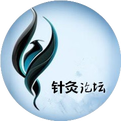The structure of the filiform needle can be divided into five parts: the needle tip, needle body, needle root, needle handle, and needle tail.
The needle tip is the sharp end of the needle body, also known as the needle point; the needle body is the main part between the needle tip and the needle handle, also referred to as the needle shaft; the part connecting the needle body and the needle handle is called the needle root; the part of the needle body where the practitioner exerts force is called the needle handle; the end part of the handle is known as the needle tail. The needle handle and needle tail are often wrapped with copper or silver wire in a spiral or cylindrical shape, and the shapes of the needle handle can vary, including loop handle, flower handle, flat handle, and tube handle. The main function of the needle handle is to facilitate force application, which is beneficial for needle insertion. The flower handle, also known as the coiled dragon needle, is thicker and is often used for fire needling, which helps dissipate heat and prevents burning during use.
Specifications
The specifications of filiform needles are primarily distinguished by the diameter and length of the needle body. Generally, in clinical practice, needles of sizes 28 to 30 (0.32 to 0.38 mm) and lengths of 1 to 2 inches (25 to 50 mm) are most commonly used. Short needles are often used for ear acupuncture and shallow needling, while long needles are used for deep needling in areas with thick muscle and for certain points requiring transverse needling.
Inspection
Filiform needles are tools for treating diseases, and they must be inspected before use to avoid affecting the insertion and treatment outcomes. During inspection, attention should be paid to:
The needle tip should be straight and not skewed, rounded but not blunt, free of barbs, with high smoothness, and shaped like a “pine needle” to minimize insertion resistance and prevent dullness; the needle body should be smooth, straight, round, uniform, strong, and elastic; the needle root should be secure, without erosion or scars.
The metal wire of the needle handle should be evenly wrapped, secure, and not loose or broken, with the length and thickness of the needle handle being moderate for easy handling.
Storage
Proper storage of needles is essential to prevent damage to the needle tip, bending of the needle body, rusting, or contamination. Therefore, needles should be stored properly. Storage devices include needle boxes, needle tubes, and needle clamps. When using a needle box or needle clamp, several layers of sterilized gauze should be placed, and the sterilized needles should be arranged according to their lengths on or inserted into the gauze, then covered with sterilized gauze to prevent contamination, and finally, the needle box or clamp should be securely closed for future use.

Follow to view
After following the platform, reply with a number to view the corresponding content
Reply ‘0’ to view: Huangdi Neijing (The Yellow Emperor’s Classic of Medicine)
Reply ‘1’ to view: Jin Kui Yao Lue (Essentials of the Golden Chamber)
Reply ‘2’ to view: Shang Han Lun (Treatise on Cold Damage)
Reply ‘3’ to view: Zhong Yao Xue (Study of Chinese Medicine)
Reply ‘4’ to view: Fang Ji Xue (Study of Formulas)
Reply ‘5’ to view: Wen Bing Xue (Study of Warm Diseases)
Reply ‘6’ to view: Zhong Yi Mai Zhen Xue (Study of Pulse Diagnosis)
Reply ‘7’ to view: Shen Nong Ben Cao Jing (Shen Nong’s Classic of Materia Medica)
Reply ‘8’ to view: Zhong Yi Ji Chu Li Lun (Basic Theory of Chinese Medicine)
Reply ‘9’ to view: Zhong Yi Zhen Dui Xue (Study of Chinese Medicine Diagnosis)
Reply ’10’ to view: Zhong Yi Yang Sheng Xue (Study of Chinese Medicine Health Preservation)
Reply ’11’ to view: Zhong Yi Jiu Liao Fa (Methods of Moxibustion)
Reply ’12’ to view: Ai Jiu Gua Sha An Mo [Disease Encyclopedia]
Reply ’13’ to view: Tui Na Ji Chu Xue (Basic Study of Tui Na)
Reply ’14’ to view: Lin Chuang Tui Na Xue (Clinical Study of Tui Na)
Reply ’15’ to view: Zhong Yi Shou Fa (Techniques of Chinese Medicine)
Reply ’16’ to view: Zhong Yi Jing Luo Zhu Xue (Study of Meridians and Acupoints)
Reply ’17’ to view: Zhong Yi Zhen Jiu Xue (Study of Acupuncture)
Reply ’18’ to view: Xue Wei Cha Xun (Acupoint Inquiry)
Reply ’19’ to view: Dong Shi Qi Xue Xue Wei (Dong’s Unique Acupoints)
Reply ’20’ to view: Dong Shi Qi Xue Zhen Jiu Xue (Dong’s Unique Acupuncture)
Reply ’21’ to view: Ling Shu Zhen Jiu (Spiritual Pivot of Acupuncture)
Reply ’22’ to view: Ni Hai Xia Zhong Yi Zhen Jiu Xue. Yi Jing Tian Ji (Ni Hai Xia’s Acupuncture Studies)
Reply ’23’ to view: Zhong Yi Nei Ke Xue (Internal Medicine of Chinese Medicine)
Reply ’24’ to view: Zhong Yi Fu Ke Xue (Gynecology of Chinese Medicine)
Reply ’25’ to view: Zhong Yi Er Ke Xue. Xiao Er Tui Na (Pediatrics of Chinese Medicine)
Reply ’26’ to view: Zhong Yi Xiang Xue [Palmistry and Physiognomy]
Reply ’27’ to view: Xi Tong Jie Pou Xue (Systematic Anatomy)
Reply ’28’ to view: Zhong Yi Zhi Ye Yi Shi (Practicing Physician of Chinese Medicine)

